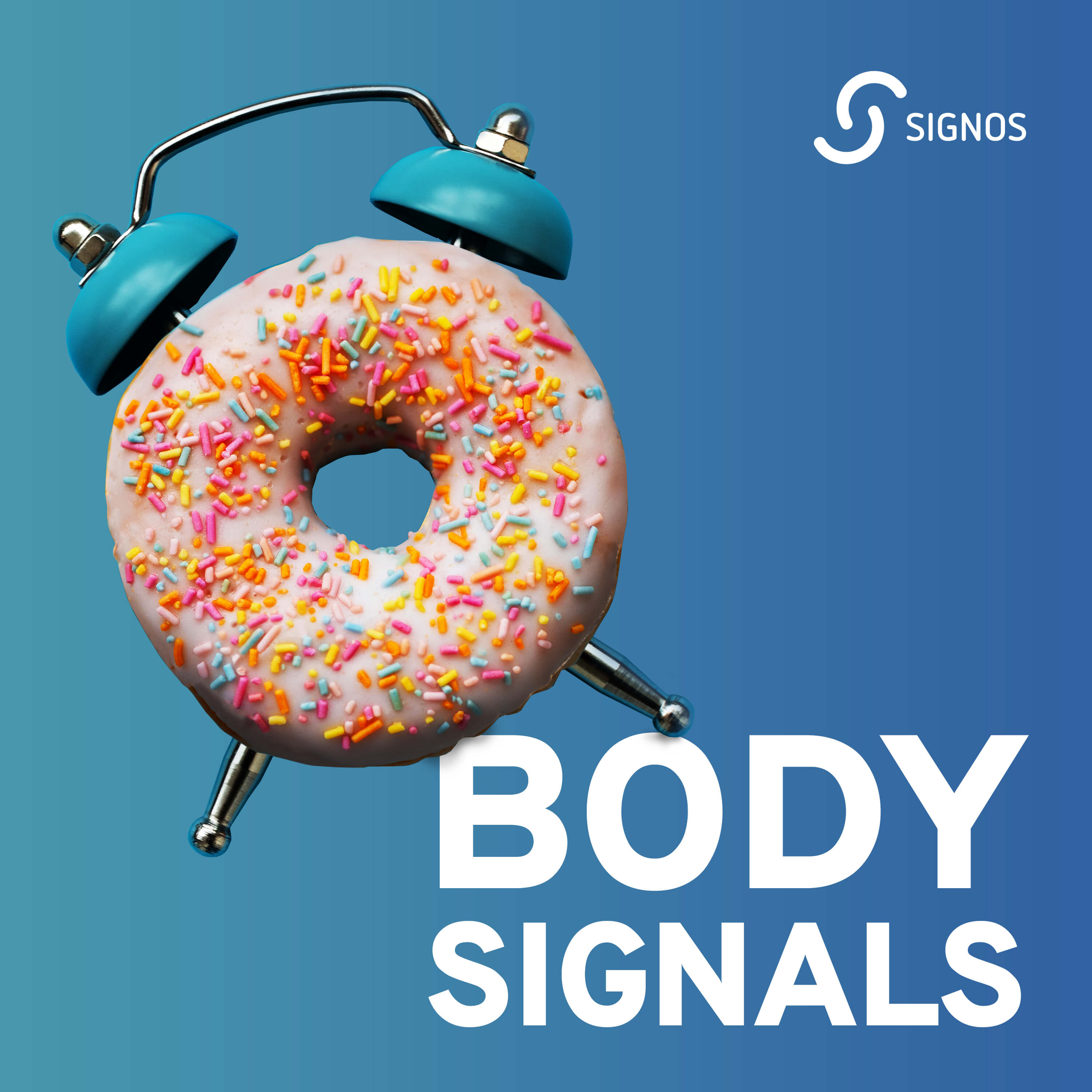The volumetrics diet has gained attention as a unique approach to weight loss, emphasizing the consumption of foods with high water and fiber content to promote satiety while keeping calorie intake in check. This article explores the principles behind the volumetrics diet and its potential impact on weight loss. We'll delve into the benefits of this eating approach as well as the drawbacks.
{{mid-cta}}
What Is the Volumetrics Diet?
The volumetrics diet is an eating approach designed to promote weight loss by focusing on the volume or bulk of food consumed rather than strictly counting calories. Developed by nutrition researcher Dr. Barbara Rolls, the concept behind volumetrics is to encourage people to eat foods low in energy density, meaning they provide fewer calories per gram but are still satisfying due to their volume.1
In the volumetrics diet, individuals are encouraged to consume foods with high water content, such as fruits and veggies, foods with high fiber content, and low-calorie foods, such as whole grains and low-fat dairy. These foods tend to be less calorie-dense, allowing individuals to eat larger portions while managing their caloric intake. The idea is that by choosing foods that provide a greater volume without a corresponding increase in calories, people can feel full and satisfied while promoting weight loss.
How the Volumetrics Diet Works?

This diet categorizes foods into four groups based on their calorie concentration and volume, helping individuals make choices that promote satiety while controlling overall calories.2 These categories include:
- Category 1 (Very Low-Calorie Density)<p style="margin: 0;"> calorie density of less than 0.6<p>
- Category 2 (Low-Calorie Density)<p style="margin: 0;"> calorie density of 0.6-1.5
- Category 3 (Medium Calorie Density)<p style="margin: 0;"> calorie density of 1.6-3.9<p>
- Category 4 (High-Calorie Density)<p style="margin: 0;"> calorie density of 4.0-9.0 <p>
Dive more into these categories below.
Category One (Calorie Density Under 0.6)
These foods have high water content and are low in calories per gram. Because they provide a significant volume without many calories, they are encouraged for their filling properties.
- Non-starchy vegetables like leafy greens
- High-water produce like watermelon and cucumber
- Non-fat dairy products
- Broth-based soups like vegetable soup, chicken soup, minestrone, and lentil soup
Category Two (Calorie Density 0.7 to 1.5)
This category includes foods slightly higher in calories than category one but still offers a good volume per calorie. They contribute to a sense of fullness without packing in excessive calories.
- Lean cuts of meat and skinless poultry
- Starchy vegetables and legumes
- Whole grains
Category Three (Calorie Density 1.6 to 3.9)
Foods in this category strike a balance between volume and calorie content.
- Full-fat dairy products
- Skin-on poultry
- Fatty fish
- Refined carbohydrates like white bread, white rice, crackers, and white pasta
Category Four (Calorie Density 4 to 9)
These foods are higher in calories and lower in volume. They should be consumed in moderation due to their calorie density. While they can add flavor and variety to the diet, keeping their intake in check is essential for weight management.
- Nuts, oils
- Fast food, chips
- Candy, baked goods2
Volumetrics Diet Pros and Cons?
There are several health benefits of following the volumetrics diet, as well as some drawbacks. Explore these pros and cons below to see if this eating style may work well with your lifestyle.
Pros
Sustainable
Unlike restrictive diets that may be difficult to maintain, the volumetrics approach allows for a variety of foods, making it more sustainable in the long term. This flexibility increases the likelihood of adherence to the eating plan.
Safe
This diet is not a fad; instead, it’s a lifestyle change. It encourages the consumption of nutrient-dense foods, ensuring that individuals receive essential vitamins, minerals, and other nutrients necessary for overall health, making it safe to follow.2
Accessible
The diet is adaptable to individual preferences and dietary needs. It recognizes that different people have different tastes, cultural influences, and lifestyle constraints, allowing for a more personalized and realistic approach to eating.
No Foods “Off Limits”
The volumetrics diet does not advocate for the elimination of entire food groups, promoting a well-rounded and inclusive approach to eating. This reduces the risk of nutrient deficiencies that can occur with more restrictive diets.
Cons
Eating Out Is Difficult
Adhering to the volumetrics diet may pose challenges in social situations or when dining out, as finding suitable options that align with the diet's principles may be difficult.
It Can Be Boring
The volumetrics diet can sometimes be perceived as monotonous or bland by individuals who find the repetitive emphasis on certain low-calorie, high-volume foods less exciting. The focus on very low-density and low-density foods, such as fruits, vegetables, and lean proteins, can make meal options seem limited, potentially leading to a sense of culinary monotony.
Additionally, avoiding higher-calorie, flavorful options like oils, nuts, and certain sweets may leave some individuals missing the variety and indulgence they enjoy in their meals.
It Limits the Consumption of Healthy Fats
It restricts the intake of beneficial fats. Unlike certain eating plans that differentiate between good and bad fats, the volumetrics diet places nuts and seeds in the same category (four) as sweets and fast food.
It’s Too Calorie-Focused
The volumetrics diet relies on calculating energy density, making calorie counting a fundamental aspect of the plan. This means that high-calorie foods like avocados and whole eggs are limited, but processed, low-calorie foods like diet ice cream are allowed.
However, we've come to understand that calorie counting has its limitations, often treating foods with the same calorie content—like 1 ounce of nuts and 1 ounce of chips—as nutritional equivalents. We now recognize that not all calories are equal.3
<p class="pro-tip"><strong>Also Read: </strong><a href="/gluten-free-diet">Gluten-Free Diet: Is It for You? Benefits & Foods to Try</a>.</p>
Volumetrics Diet and Weight Loss

Achieving weight loss is feasible even when consuming larger quantities of food, thanks to the volumetrics diet. By prioritizing nutrient-rich foods with lower calorie content, adhering to this eating pattern will likely result in weight loss.
Short-Term Weight Loss
In the short term, the volumetric diet can contribute to weight loss by promoting a sense of fullness and satisfaction with fewer calories. By focusing on category one and category two foods, individuals can eat larger portions while still managing their overall caloric intake. The increased consumption of water-rich fruits and vegetables, along with fiber from whole grains, contributes to feelings of satiety, making it easier for individuals to adhere to a reduced-calorie diet. This initial phase often leads to a calorie deficit, resulting in weight loss.
Long-Term Weight Loss
The volumetrics diet's sustainable and flexible approach makes it suitable for long-term weight loss. Unlike more restrictive diets, volumetrics doesn't eliminate entire food groups, allowing individuals to maintain a varied and balanced diet over time. The emphasis on nutrient-dense foods promotes overall health and helps individuals establish healthier eating habits that can be sustained in the long run. This makes it more likely for individuals to continue making mindful food choices, contributing to gradual and sustained weight loss.
Weight Maintenance
The volumetrics approach is well-suited for weight maintenance because it fosters a lifestyle that encourages moderation and balanced eating. By incorporating various foods from different categories, individuals can sustain their weight loss achievements without feeling overly restricted. The diet's focus on awareness of energy density helps individuals make informed choices, preventing the regain of lost weight. Additionally, the adaptability of the volumetrics diet to individual preferences and lifestyles makes it easier for people to stick to their healthy eating patterns in the long term.
Volumetrics Diet Plan Sample
Below is a sample meal plan that you could follow if you were interested in trying out the volumetrics diet.
Breakfast:
Scrambled Egg and Vegetable Wrap
- 2 scrambled eggs with spinach, tomatoes, and bell peppers
- Whole-grain wrap
- Salsa for added flavor
Lunch:
Quinoa Salad with Chicken
- Grilled chicken breast
- Quinoa mixed with a variety of colorful vegetables (e.g., cucumber, cherry tomatoes, bell peppers)
- Light vinaigrette dressing
- Side of mixed greens
Snack:
Fresh Fruit and Greek Yogurt Parfait
- Greek yogurt (low-fat or non-fat)
- Mixed berries (such as blueberries and strawberries)
- A sprinkle of granola for crunch
Dinner:
Baked Salmon with Roasted Vegetables
- Salmon fillet seasoned with herbs and lemon
- Roasted vegetables (zucchini, carrots, broccoli) drizzled with olive oil
- Quinoa or brown rice as a side
How to Know if the Volumetrics Diet Is Right for You
In conclusion, while the volumetrics diet offers a balanced and sustainable approach to weight loss and maintenance, there may be better choices for individuals who shouldn't be losing weight, such as those with certain medical conditions or those underweight. However, the volumetrics diet presents several appealing characteristics for those seeking a nutritious and satisfying eating plan.
Lifestyle Adaptability
The volumetrics diet is adaptable to different dietary preferences and lifestyles, accommodating vegans, vegetarians, and those with specific cultural food preferences, enhancing its appeal to a broad audience.
Satiety
The focus on low-calorie, high-volume foods promotes a sense of satiety and fullness, making it suitable for individuals who appreciate feeling satisfied with their meals.
Loose Structure
One of the notable strengths of the volumetrics diet is its ability to strike a balance between providing structure and avoiding excessive restrictions. This unique characteristic makes it an appealing and sustainable approach for individuals seeking a guided eating plan without feeling overly confined.
Learn More About Healthy Nutrition With Signos’ Expert Advice
Embarking on a journey toward better nutrition and adopting healthier eating habits is a transformative step toward overall well-being. If you're eager to delve deeper into the realm of nutrition and explore personalized guidance, consider seeking expert advice from Signos.
Discover the impact of your diet, exercise routine, sleep quality, and stress levels on your blood sugar with Signos. Cultivate these positive habits on a daily basis to experience improvements in your overall health, achieve weight loss, and more. Want more? We offer a variety of nutrition and healthy habits content on our blog.
Determine if Signos is the right match for you by completing a brief quiz. Gain insights into how Signos can cater to your specific needs and contribute to your journey toward improved health and nutrition. Take the quiz now to discover a personalized approach to well-being!
<p class="pro-tip"><strong>Learn More: </strong><a href="leptin-foods">Leptin Diet: Are There Any Leptin-Boosting Foods?</a>.</p>
- Item 1
- Item 2
- item 3
Topics discussed in this article:
References
- Mindy, Hermann. Rolls, Barbara. (2013). The ultimate volumetrics diet: Smart, simple, science-based strategies for losing weight and keeping it off. HarperCollins.
- Cleveland Clinic. (2023, December 18). What is the Volumetrics Diet? https://health.clevelandclinic.org/volumetrics-diet
- Ajmera, R. (2020, August 11). Volumetrics Diet Review: Does it work for weight loss?. Healthline. https://www.healthline.com/nutrition/volumetrics-diet#foods-to-eat-avoid


.jpg)



























